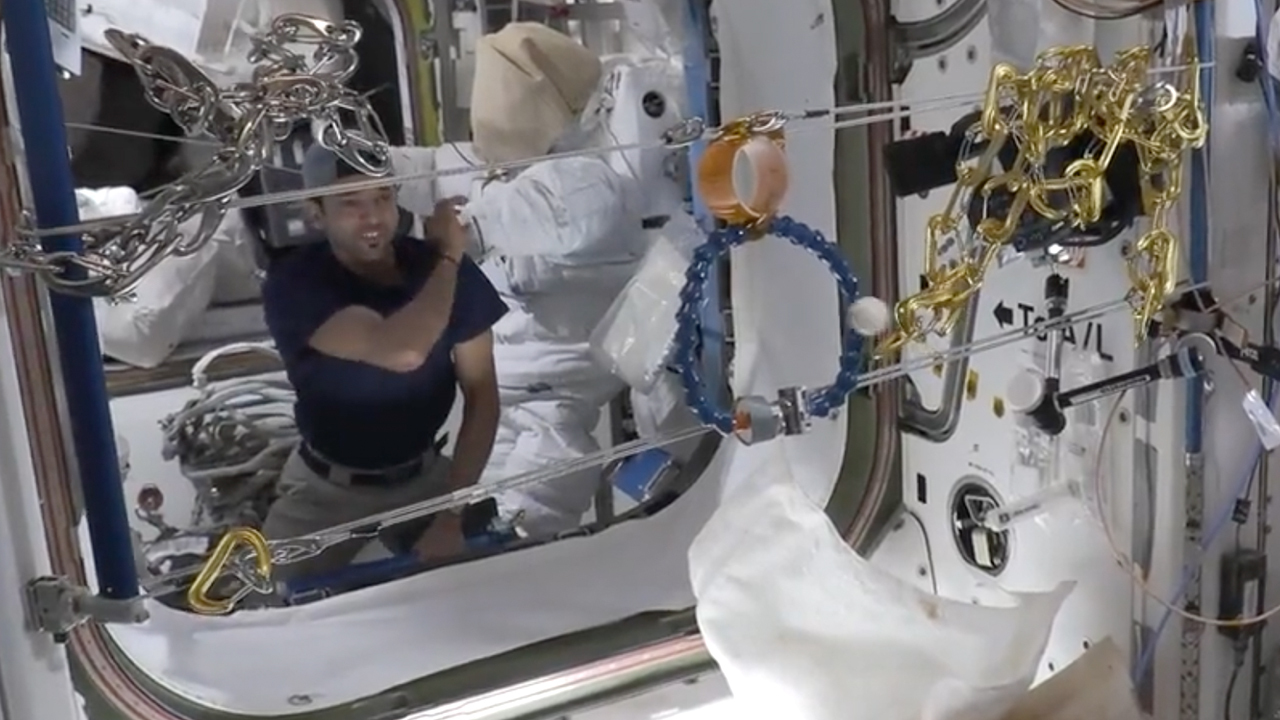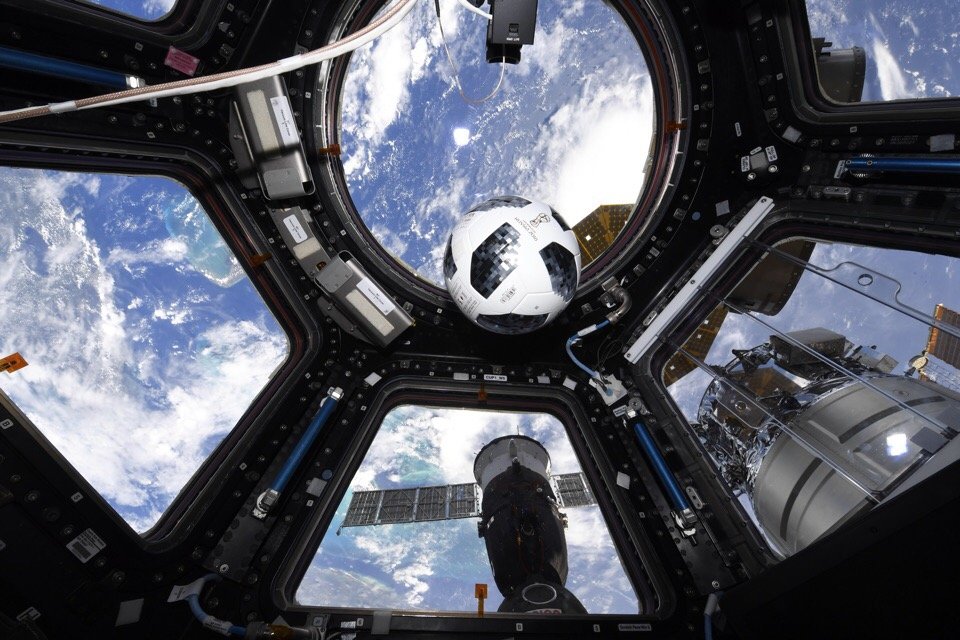
What games could you create with tie-down straps, a few circular rings and the magic of microgravity?
The International Space Station (ISS) crew recently came up with one called "Space Dart," which engaged the multinational crew in feats of flexibility. Judging from the video available on social media, the newly invented game looks like a great way to spend a weekend in orbit.
"During the weekends, we sometimes spend our time playing games," United Arab Emirates astronaut Sultan Al-Neyadi, who posted the video, said on Twitter. "It is one of our favorite activities to do together. These games are the perfect way to unwind after work and prepare ourselves for the tasks ahead."
Related: 'Play ball!' Space station astronauts celebrate World Series with an orbital pitch

The video doesn't really explain the rules of Space Dart. But there appear to be a certain number of turns per person. They try to throw a ping-pong ball through one of two hoops: a large ring of beads, or a smaller metallic ring of some sort that is just a bit larger than the ball itself.
Some of the crewmembers not only got it through the tiny ring, but one person managed to get a little spin around the edges — a sort of space station "rim shot" akin to what pro basketball players can do on Earth.
The winner of Space Dart was Sergey Prokopyev, perhaps no surprise given his accumulated time in microgravity. He already had nearly 200 days in space on a previous mission, Expedition 56/57, before flying to the ISS again in September for another six-month stint.

Ball games of all sorts are popular on the space station. Last year, NASA astronauts threw an orbital pitch at the same time that the hometown Houston Astros were competing in the World Series. (The Astros won over the Phillies in six games to get the championship.)
The FIFA Women's World Cup is going on right now, presenting another opportunity for astronauts to revisit their passion for soccer (which may be called football, depending on the country you come from). Some past FIFA events in orbit were played in 2018 and also in 2014, for example, featuring epic throws and catches that are possible in zero gravity as astronauts tried to bend it like Beckham.
Calvinball-like games are also a feature of space station living to help the astronauts engage the public. In 2018, for example, the ISS crew posted a video using a basketball (and floating crewmembers) to demonstrate Newton's Law of Motion.
Incidentally, the name "Space Dart" appears to be popular in the community already. A Lego set from 1984 had that moniker, according to Brickset; it features a minifigure flying a jet-like spacecraft.
Some space entities have also referred to the Double Asteroid Redirect Test (DART) as "Space DART." This mission successfully slammed a spacecraft impactor into the asteroid moonlet Dimorphos in September 2022, not only altering the orbit around Didymos as planned but creating a trail of dust and rubble spotted by numerous space telescopes.







